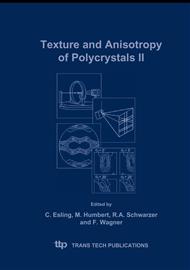p.415
p.421
p.427
p.433
p.439
p.447
p.453
p.459
p.465
Three-Dimensional Microstructure of Thin Copper Foils Revealed by Ion Beam Cutting and Electron Backscatter Diffraction (EBSD)
Abstract:
Tensile testing of thin rolled copper foils with thickness ranging from 10 to 250 µm shows a dependence of the fracture strain with respect to the thickness of the foils [G. Simons et al., in Solid Mechanics and its Applications, Vol. 114 (2004), pp. 89-96]. To understand the influence of the microstructure in the foils on this phenomenon the microtexture is investigated by orientation mapping through electron backscatter diffraction (EBSD). As the samples are rather small standard preparation techniques do not apply. Two methods are described which allow the investigation of different section cuts of the samples: Cross sections of the samples were produced by ion beam cutting with a wide beam of 7 keV Kr ions. Internal planes parallel to the specimen surface were made accessible by wet etching. The as-received material possesses a very strong texture consisting mostly of the cube component and some remnants of a previous rolling texture. Specimens tested in a tensile test do not show major microstructural changes compared to virgin samples. After a heat treatment at 300°C the cube texture has significantly weakened in favour of revived rolling components, and the fracture strain increased about ten times relative to the as-is material.
Info:
Periodical:
Pages:
465-0
Citation:
Online since:
July 2005
Authors:
Price:
Сopyright:
© 2005 Trans Tech Publications Ltd. All Rights Reserved
Share:
Citation:


